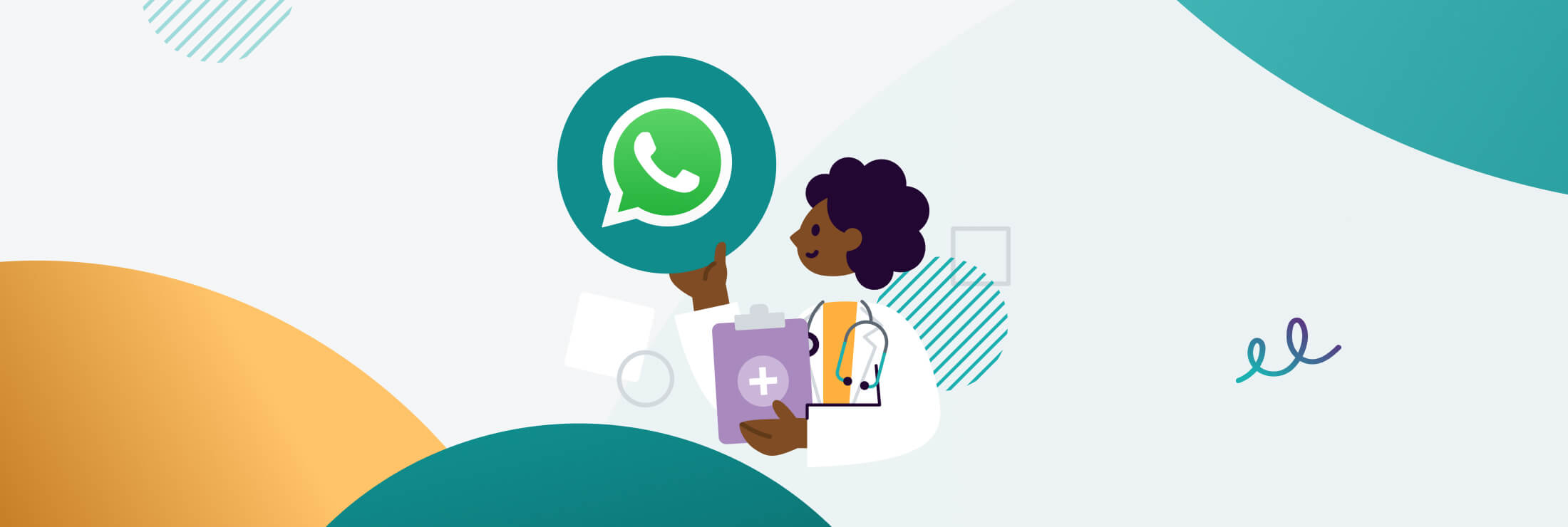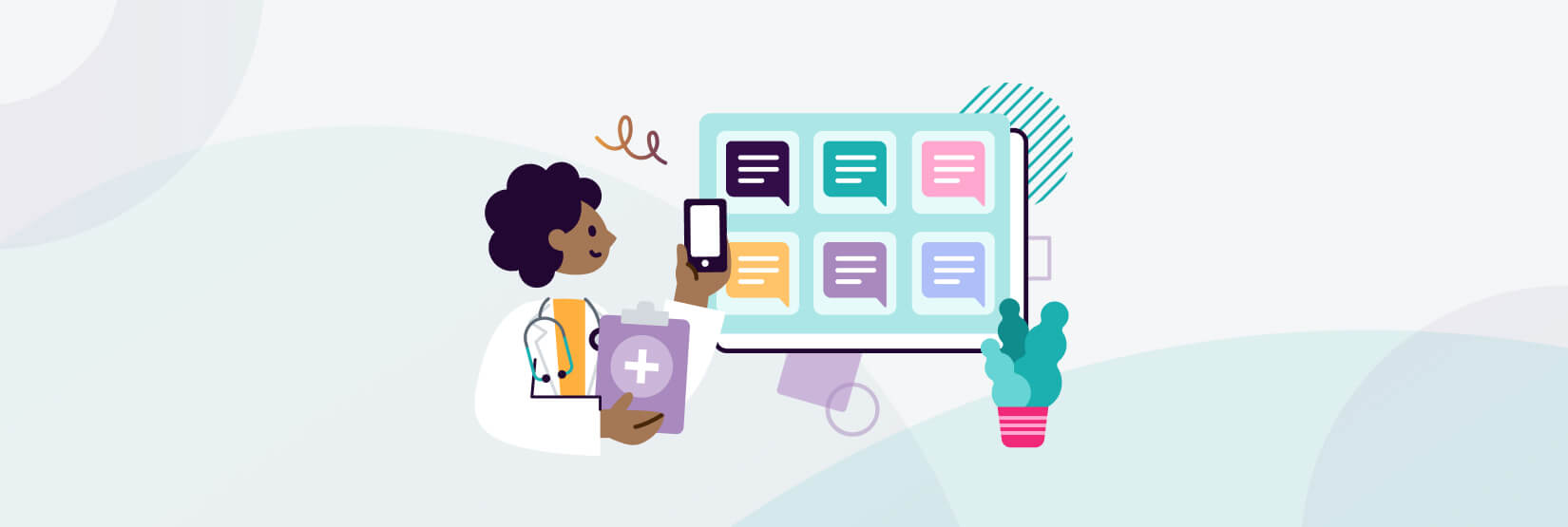
- Which channels can be used to improve communication in healthcare?
- Messages you can send to improve communication in healthcare
- 1. Appointment reminders
- 2. Collection notifications
- 3. Test result updates
- 4. Emergency alerts
- 5. Medication reminders
- 6. Two-way conversations
- 7. Patient feedback and surveys
- 8. Internal communication in healthcare
- Discover the potential of mobile messaging in improving patient experience within healthcare
Did you know that 91% of the world’s population (7.3 billion) owns a mobile phone? And 86% of this figure owns a smartphone. Did you also know that only 24% of people living in the UK are satisfied with the NHS? This data shows that patient experience should be improved and mobile messaging, in particular SMS communication in healthcare, is one of the best channels to reach your patients on. In fact, it’s accessible, easy to use, and convenient. No need to search through a crowded inbox.
Which channels can be used to improve communication in healthcare?
As previously mentioned, SMS communication in healthcare is one of the key channels. No need to have internet access, all phones can receive text messages, it’s simple, direct and easy to use.
If you wish to take your communications to patients a step further, you can use SMS landing page, RCS or WhatsApp Business Platform. When using these channels you can interact with buttons, share images, videos and other media, talk to a bot, and more.
Messages you can send to improve communication in healthcare
Here are some of the top ways mobile messaging can be used to improve the patient experience:
- Appointment reminders
- Collection notifications
- Test result updates
- Emergency alerts
- Medication reminders
- Two-way conversations
- Patient feedback and surveys
- Internal communication
1. Appointment reminders
In the UK, between June and December 2022, missed appointments cost the NHS an estimated £290,323,500. It’s time to start looking at more innovative, yet cost-effective ways to engage with patients.
Mobile messaging channels like SMS and WhatsApp boast average open rates of up to 98% and 99% respectively. Plus, more than 90% of people read a text message within the first three minutes of receiving it. So, instead of posting letters that take days to arrive and are easily misplaced, or emails that can end up in spam folders, send an appointment reminder via the likes of SMS or WhatsApp.
Learn more: SMS appointment reminders: How to reduce no-shows
2. Collection notifications
When prescriptions are ready to be picked up, let patients know via a quick text message. It saves them from ringing the pharmacy to check and having to wait on hold. For pharmacy staff, it means fewer people ringing for this reason, giving you more time to help patients who really require your attention.
3. Test result updates
Waiting for test results can be frustrating, especially if the patient is required to wait for the hospital or health practice to ring them with the results. In many cases, the patient would likely ring up the reception team to check in. Not only will this impact the patient experience, but it also contributes to longer call-hold times.
Like collection notifications, why not send test results via SMS, WhatsApp, or RCS message? If results are sensitive, you can prompt patients to ring the practice or send a text message that allows them to book a call slot with a medical practitioner.
4. Emergency alerts
When it comes to emergency comms – such as practice closures, revised appointment details, and emergency health advice – traditional means of communication are often not the most effective. Perhaps the patient isn’t at home to take that important call, and then fails to listen to the voicemail message that’s been left behind, or the letter that’s been sent gets ignored, or even lost in the post.
This is where mobile messaging channels can help. An added benefit is that you can include hyperlinks to more digital services like web pages and appointment booking platforms.
5. Medication reminders
It’s not just appointment reminders that you can take advantage of. Automated messages can also be used to remind patients to take their medication at the right time.
This gives the medication a much higher chance of being successful and reduces the amount of follow-up appointments that may be needed.
6. Two-way conversations
There are various scenarios that will invite lots of questions from patients. This can be challenging considering that healthcare providers have limited resources – not just in terms of medical professionals but also the channels through which they can be reached. For example, if they can only be reached via a phone call, this will lead to long hold times.
Online mobile messaging chat tools can help solve this problem by allowing staff to manage multiple conversations at the same time through widely used channels like SMS, RCS, and WhatsApp. This also benefits patients in that they don’t have to wait on hold for immediate access to trained healthcare professionals. Plus, it can all be done at a time and place that suits them best.
For simpler or repetitive enquiries, chatbots can also be deployed, meaning that some patients can self-serve, freeing up more time for staff to handle the complex queries.
7. Patient feedback and surveys
Communication in healthcare should be two ways. In fact, it’s important to find out what patients think to improve services. The best way to find out whether your services are actually of use to patients is to ask them! But as you know, convincing busy people to fill out a survey isn’t always the easiest task. And more traditional communication methods, such as paper letters and email, can be easily ignored, lost, or end up in spam folders.
When you send a survey via a mobile messaging channel (e.g. an SMS survey), you’re making the most of a 99% open rate and a response rate that’s 209% higher than email, phone, or social media.
8. Internal communication in healthcare
When shifts need covering, trying to ring all your staff members or organising external cover can become very time-consuming and expensive.
Mobile messaging channels are a great way to communicate with your whole team at once, cutting a job that would usually take hours, down to just a few minutes. You can then receive instant replies from staff members that are available. Not only does this speed up the whole process saving time and money, but it increases the probability of covering a shift internally rather than through expensive agency staff.
Discover the potential of mobile messaging in improving patient experience within healthcare
Technology – including emails, video calls, customer-centred portals, and mobile messaging channels like SMS, RCS, and WhatsApp – goes a long way in improving the relationship between clinicians and patients.
Whether you’re a healthcare provider or a software company that specialises in providing innovative solutions for the healthcare sector, if you’d like to find out more about how mobile messaging can help your organisation, don’t hesitate to reach out to us.



